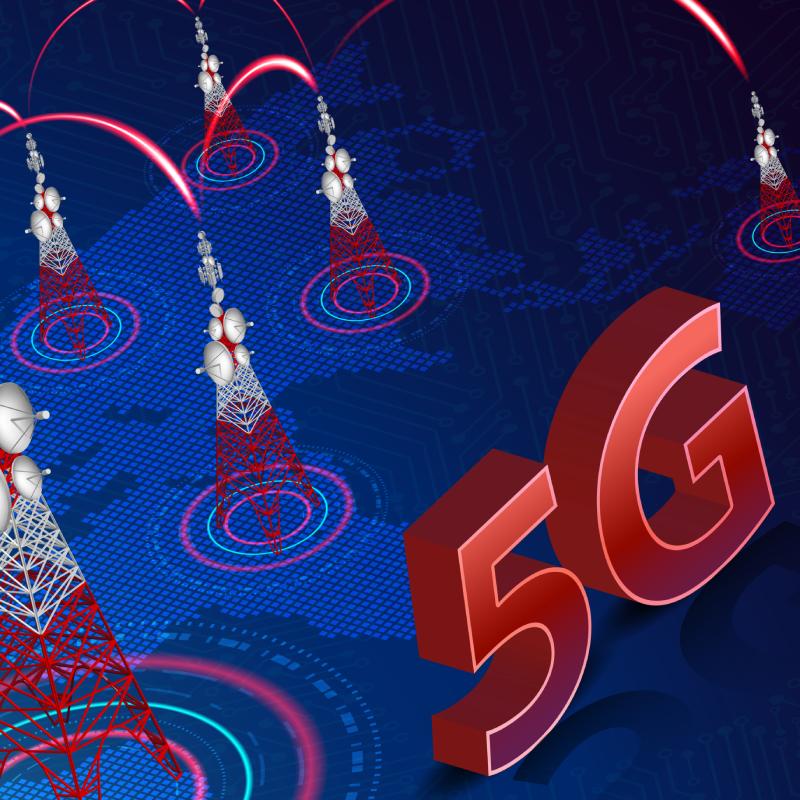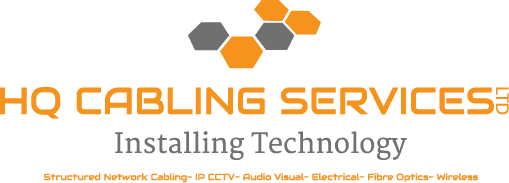In a world that is more connected than ever, the role of telecommunications technologies is critical in enabling conversations, data exchange, and forging global networks.
When we talk about telecommunications technologies, we refer to a broad range of systems and innovations that allow people and businesses to communicate across distances.
From traditional phone lines to cutting-edge digital networks, these technologies form the backbone of modern communication.
Today, we peel back the layers of communication systems and explore what exactly telecommunications technologies are and the different kinds that exist today. Through this exploration, you will get insights into how these technologies work and their impact on our daily lives.

What Is Telecommunications Technologies?
Telecommunications technologies refer to the systems that enable the transfer of voice, data, and video across distances via cables, radio waves, or the internet. These technologies play a critical role in everyday communication and connections across various aspects of life.
What Are the Different Telecommunications Technologies?
When dissecting the array of telecommunications technologies, we encounter a diverse and impressive landscape. Broadly, these technologies can be grouped into five categories: wireline, wireless, broadcast, internet protocol (IP) based, and networking technologies.
Each category plays a unique role in the overarching communication network that keeps us interconnected. Understanding these groups will shed light on how we are able to instantly message a friend, stream a live video from across the globe, or send an email within seconds.
Let’s explore these foundational technologies that drive our ability to connect and communicate.
Wireline Technologies
Wireline technologies use physical network cables to transmit voice, data, and video communications. They are regarded as the traditional form of connecting devices and transmitting information and have been fundamental in the development of global communication networks.
Pros:
- Reliability: Wireline connections are less susceptible to interruptions and provide consistent service.
- Security: Physical connections can be more secure against certain types of interception and unauthorised access.
- Speed: Wired connections often offer high-speed data transfer, particularly with advanced cables like fibre optics.
- No interference: The physical shielding in cables like coaxial can prevent external interference, ensuring a clear signal.
Cons:
- Cost: Installing physical infrastructure can be expensive, especially over large distances.
- Maintenance: Wires and cables can suffer from wear and tear, requiring regular checks and repairs.
- Flexibility: Moving wired connections can be difficult and inconvenient compared to wireless options.
- Access: Remote or rural areas may be challenging to connect due to the need for extensive cabling.
Twisted Pair
A twisted pair consists of two insulated copper wires twisted together, which is a simple yet widely used wireline technology. Its unique feature is the twisting of the wires, which helps to reduce signal interference and crosstalk, making it beneficial for telephone and internet connections in homes and offices.
Coaxial Cable
A coaxial cable contains a core inner conductor surrounded by an insulating layer, a conductive shield, and an outer layer. This design delivers greater bandwidth and resistance to signal loss, making it ideal for television signals, internet, and telephone lines.
Fibre Optics
Fibre optics use thin strands of glass or plastic fibres to transmit data using light signals. Its advanced technology offers extremely high-speed data transfer rates with minimal loss, revolutionising long-distance communication and supporting the backbone of the internet.
Wireless Technologies
Wireless networking technologies bypass the need for physical wires, using electromagnetic waves to transmit information through the air.
These technologies have transformed the way we access information by breaking the tether of wired connections to allow mobility and convenience.
Pros:
- Mobility: Users can stay connected on the move, enhancing productivity and user experience, especially for tasks that require on-the-go access, like mobile payments and GPS navigation.
- Scalability: Adding new users or expanding network coverage is simpler, as it often only requires additional wireless access points rather than extensive cabling.
- Access in remote locations: Wireless networks can reach rural or difficult-to-wire areas, facilitating communication and data transfer where traditional wiring is not feasible.
- Flexible network designs: Wireless systems can be easily reconfigured and adapted to changing needs or environments.
- Reduced maintenance: Fewer physical components such as wires and cables mean less wear and tear and ultimately lower maintenance costs over the long term.
Cons:
- Interference: Susceptible to interference from other devices and physical barriers, which can impact performance.
- Security: Wireless signals can be more vulnerable to unauthorised access if not properly secured.
- Limited range: The range of connectivity is typically shorter than wired connections, requiring repeaters or additional access points for larger areas.
- Variable speeds: Connection speeds can be inconsistent and may be slower than wired connections, especially as distance from the signal source increases.
Cellular Networks
Cellular networks are composed of interconnected cells, each with a communication tower, enabling mobile phones and devices to communicate wirelessly. They offer the unique benefit of allowing mobile communication over a wide area.
Wi-Fi
Wi-Fi uses radio waves to provide wireless high-speed internet and network connections. Its greatest feature is the convenience of connecting multiple devices to the internet without the need for wires.
Bluetooth
Bluetooth is a short-range wireless technology designed to connect devices over short distances. Its key feature is the ability to easily link various devices, like phones to headphones, without cables.
Satellite Communication
This technology employs communication satellites in Earth’s orbit to relay signals across large distances. It enables features such as global broadcasting and connectivity in remote locations.
Microwave
Microwave technology uses high-frequency radio waves for point-to-point communication. It’s especially useful for transmitting data over long distances where laying cables is not feasible.
Broadcast Technologies
Broadcast technologies are systems that distribute audio and video content to a large audience through electromagnetic waves without requiring a physical connection to the receiver.
Pros:
- Wide reach: Broadcasting can reach a vast audience simultaneously, making it ideal for widespread information dissemination.
- Cost-effective: There’s no cost to the audience for receiving broadcast signals, aside from having the necessary equipment.
- Simplicity: Tuning into a broadcast requires minimal technical knowledge, making it accessible to a wide demographic.
- Live content delivery: Broadcast technologies are well-suited for real-time content delivery, such as live news or sports events.
Cons:
- Limited interaction: Traditional broadcast technologies offer limited opportunities for audience interaction.
- Signal interference: Broadcast signals can suffer from interference, which can affect the quality of the received content.
- Limited bandwidth: There’s a finite number of frequencies available for broadcasting, which limits the number of channels.
- Content control: Viewers have limited control over what content is broadcast and when it is available.
Broadcast technologies continue to be a significant means of reaching audiences despite the rise of on-demand content platforms, owing to their unique advantages and the experience they offer.
Radio Broadcasting
Radio broadcasting transmits audio content through the radio waves to reach a wide audience. This technology is still widely adopted thanks to its ability to broadcast to countless devices anywhere within signal range in real-time.
Television Broadcasting
Television broadcasting sends out video and audio signals to deliver programs to television sets. The technology is still popular because of its ability to provide real-time video content over a range of channels to viewers across various locations.
Internet Protocol (IP) Based Technologies
IP-based technologies are a suite of digital communication methods that use the Internet Protocol to send and receive data across the World Wide Web and private networks.
Pros:
- Flexibility: IP-based systems can easily adapt to different types of data, such as voice, video, and text.
- Scalability: Networks can be expanded or modified without significant overhauls to the infrastructure.
- Cost-effective: These technologies often reduce the need for traditional telephony networks, cutting down on long-distance costs.
- Remote connectivity: Users can access their IP-based services from anywhere with an internet connection.
Cons:
- Dependence on the internet: A stable and fast internet connection is essential, without which service quality may suffer.
- Security risks: Data transmitted over the internet can be vulnerable to hacking and cyber threats.
- Complexity: Setting up and managing IP networks may require more technical expertise than simpler systems.
- Quality of service: Network congestion can affect the quality of IP services, making consistent service quality a challenge.
IP-based technologies represent a significant shift in how we communicate, offering a versatile and integrated approach to data exchange with their own set of strengths and challenges.
Voice over IP (VoIP)
VoIP technology enables voice calls over the internet rather than traditional phone lines. Its key benefit is the ability to make calls worldwide with potentially lower costs and the integration of additional features like video conferencing.
Internet of Things (IoT)
IoT connects everyday devices to the internet, enabling them to send and receive data. This interconnectivity allows for smart automation and efficiency across various domestic systems and industrial networking applications.
WebRTC
WebRTC (Web Real-Time Communication) allows browsers to perform real-time communication without additional plugins. It offers unique benefits like direct peer-to-peer video, voice communication, and data sharing within web pages.
Networking Technologies
Networking technologies encompass the hardware and software components that connect devices and manage data traffic within and between networks.
Pros:
- Connectivity: They allow multiple devices to communicate and share resources efficiently.
- Resource sharing: Networks enable the sharing of hardware, software, and data among devices, reducing costs.
- Centralised management: Networks can be managed from a central location, simplifying administration tasks.
- Scalability: Networks can be scaled up or down to meet changing demands with relative ease.
Cons:
- Complexity: Designing, implementing, and maintaining networks can be complex, requiring specialised knowledge.
- Security: Networks are vulnerable to unauthorised access and cyberattacks, necessitating robust security measures.
- Cost: Initial setup and ongoing maintenance of networking infrastructure can involve significant investment.
- Downtime risks: Issues with networking hardware or software can lead to downtime, affecting productivity.
Local Area Network (LAN)
A LAN connects devices over a short distance, such as within a building or campus. Its unique feature is its ability to provide high-speed connections to a specific area’s network resources and internet.
Wide Area Network (WAN)
WANs connect devices over long distances, spanning cities, states, or even countries. This technology is critical for businesses with multiple locations that need to stay connected.

Virtual Private Network (VPN)
A VPN extends a private network across a public network, allowing users to send and receive data securely and privately. Its unique feature is creating a secure ‘tunnel’ over the internet, protecting data as it travels.
Emerging Technologies
Emerging technologies in telecommunications represent the cutting edge of innovation, offering new ways to connect and communicate with advances that push the boundaries of speed, efficiency, and functionality.
Pros:
- High performance: Many emerging technologies promise faster speeds and lower latency, which are crucial for applications like autonomous vehicles and real-time analytics.
- Innovative features: They often include features that address the limitations of existing technologies, such as higher data capacity and improved energy efficiency.
- Enhanced connectivity: These technologies can connect more devices in more places, supporting the expansion of Internet of Things (IoT) networks.
- Future-proofing: Investing in emerging technologies can prepare users and businesses for future demands and technological shifts.
Cons:
- Adoption barriers: Costs, infrastructure requirements, and user familiarity can slow down the adoption of new technologies.
- Compatibility issues: Emerging technologies may not be fully compatible with existing systems, leading to integration challenges.
- Regulatory uncertainty: As these technologies are new, regulations governing their use may be undeveloped, leading to potential legal and operational uncertainties.
- Reliability and testing: Being new, they may not have been tested as extensively, and long-term reliability could be unproven.
Despite the challenges, emerging telecommunications technologies continue to evolve, offering exciting possibilities for transforming how we live and work.
5G and Beyond
5G represents the next generation of cellular network technology, promising faster speeds, lower latency, and increased capacity. This technology is essential for supporting new applications like autonomous vehicles and advanced IoT systems.
Li-Fi (Light Fidelity)
Li-Fi uses light to transmit data wirelessly, boasting higher speeds than Wi-Fi. Its unique advantage is utilising the visible light spectrum, which could lead to more secure and efficient wireless communication within light-covered areas.
Wrapping Up
Telecommunications technologies are integral to our interconnected world. From wireline to wireless, broadcast to IP-based, and traditional networking to emerging innovations like 5G and Li-Fi, each technology carries unique features and benefits.
Collectively, they form and enhance how we share information and stay connected across the globe.
If you’re seeking solutions in telecommunications technologies, get in touch with us at HQ Cabling Services for expert advice to help you navigate this complex and vital field.

